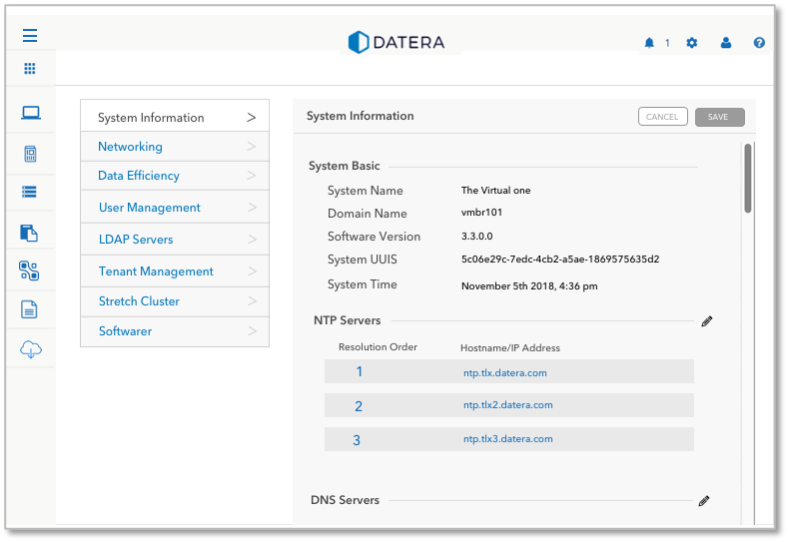Datera
Enterprise Software-Defined Storage Platform for Global 2000 enterprises and cloud service providers.
My Role
UX Designer | Front-end Developer
Tools/Technologies Used
Sketch | React | HTML | CSS
UI Redesigning and Refactoring Project
Objective
- A way to associate multiple storage templates with a single application template
- Each storage template can have multiple volumes
- Create a easier flow to create an application template
- The user should have a clear view of where they are in the process
- Need a graphical representation of the application template's hierarchy
Solution
- Use of a hierarchical view to give a holistic view of the application template and the object it contains.
- The user is guided through 3 easy steps: App template, Storage template and Volumes
- Each page contains a singular goal that creates less room for user error (eg. The volume page only contains details pertaining to the volume)





Objective
- How might we declutter and organize the system settings page so that the user can easily navigate through the various settings
Solution
- Smart organization and inline edits to minimize popups



Failure Domain and Stretch Cluster Project
Failure domains are used by Datera System to ensure the data is distributed across multiple nodes so if a domain fails, the data can still be recovered from the rest of the failure domains.
Objective: Transform failure domains from single labels on storage nodes to first-class objects. A given storage node should be able to belong to multiple failure domains by linking to multiple failure domain objects.



Datera to Cloud Project
Objective: Allow periodic (snapshot-based) replication of a Datera application instance or volume to a remote cloud provider.







